Moonshots, meteors and planets: Here are just a few things to look forward to in space in 2023
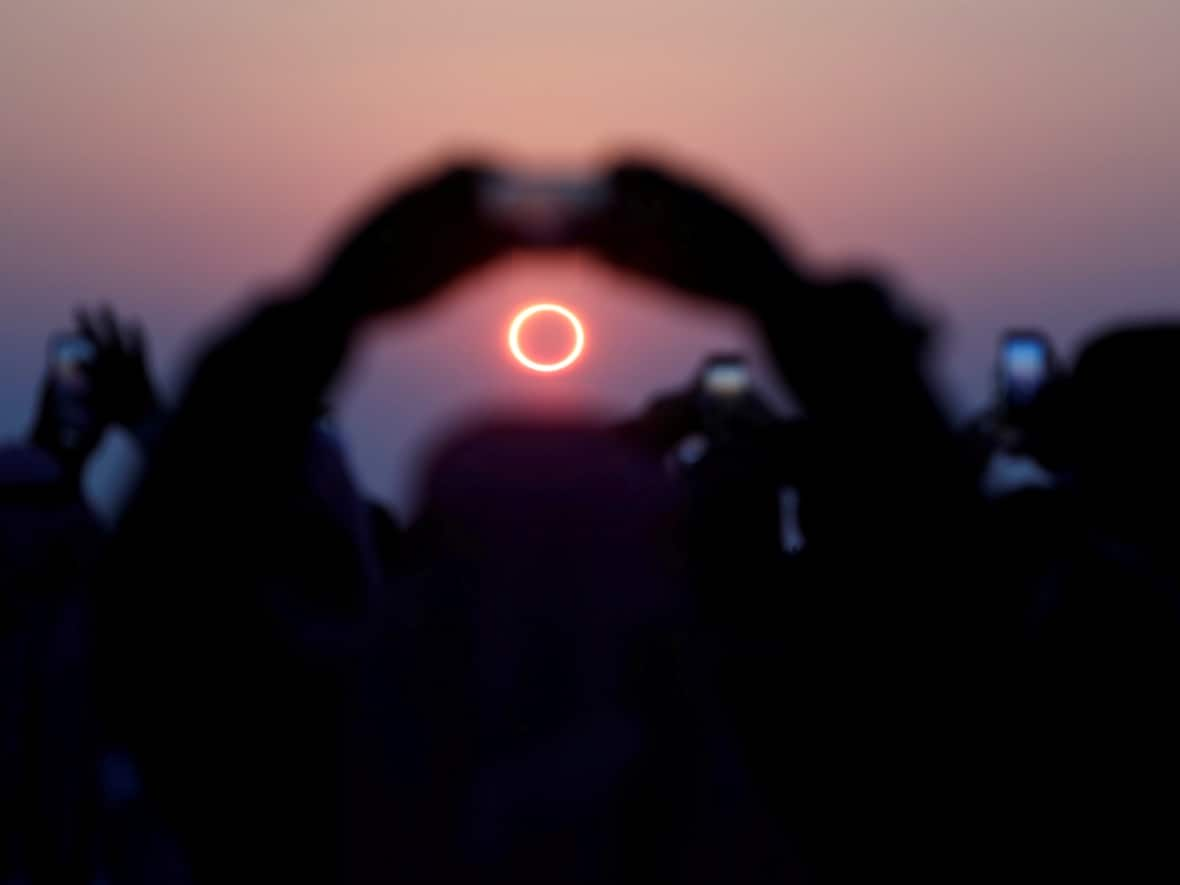
A lot happened in space news in 2022 — from the James Webb Space Telescope providing us with stunning images and data from exoplanets, to the first launch of the Artemis moon program, beautiful lunar eclipses and planet-viewing.
And it looks like the action will continue in 2023. Here are just some things to look forward to in space.
Meteor showers
The year always starts off with the Quadrantid meteor shower. Although it can produce more than 100 meteors per hour at its peak and under ideal conditions, it seldom does — as the peak lasts a mere 12 hours compared with the bigger windows, which can last far longer.
There's also the normally cloudy weather across the Northern Hemisphere to contend with, so the rate is closer to 25 meteors an hour. But this year there's another problem.
"The main issue is the nearly full moon at the time of the peak, which will be around midnight on Jan. 4 local time," Peter Brown, Canada Research Chair in meteor astronomy and a professor at Western University in London, Ont., said in an email.
The radiant — or where the meteors seem to come from in the sky — is also low, which doesn't help, he said.
The peak occurs on the night of Jan. 3-4, when the moon will be 92 per cent illuminated. Still, the good news is that, even though the odds seem stacked against this shower, the Quadrantids tend to produce fireballs.
Fast forward to what is deemed the best meteor shower of the year. The Perseids, which run from the middle of July to the beginning of September, peak on the night of Aug. 12–13 this year. This shower tends to produce roughly 100 meteors per hour at its peak under ideal conditions. The great news is that this year, the moon will be illuminated to only 10 per cent.
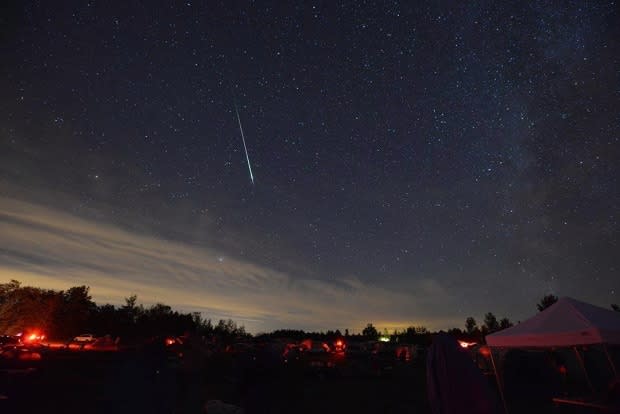
Then we jump to December, when we get the Geminids. This shower is another one that can produce upwards of 100 meteors an hour, along with fireballs. This year the shower peaks on the night of Dec. 13–14 with no interference from the moon.
However, Brown said there may be a treat in store for meteor watchers.
Due to the influence of Jupiter — whose massive gravity can change the debris left over from passing comets or asteroids — the Eta Aquariids, which peaks on the night of May 5–6, may produce more meteors than normal. The only downside is the pesky moon, which will be full that night.
SpaceX's massive Starship
The first launch of NASA's Space Launch System (SLS) was a success after facing numerous delays. Although it is currently the world's most powerful rocket, just ahead of SpaceX's Falcon Heavy, its title will eventually be surpassed by SpaceX's massive moon rocket, Starship.
For comparison, SLS has eight million pounds of thrust, while the Falcon Heavy has five million pounds. Starship will blow both of those out of the water at a whopping 17 million pounds of thrust.
After several unsuccessful landings of the upper stage of Starship, SpaceX finally nailed the landing back on May 5, 2021. But that test reached only 10 kilometres in altitude. The next step is a space launch of the entire stacked rocket, which stands an incredible 120 metres (36 storeys) high, where it will orbit Earth.
Also of note is that this is the spacecraft that is slated to take astronauts to the surface of the moon for the Artemis III mission, set for no earlier than 2025.
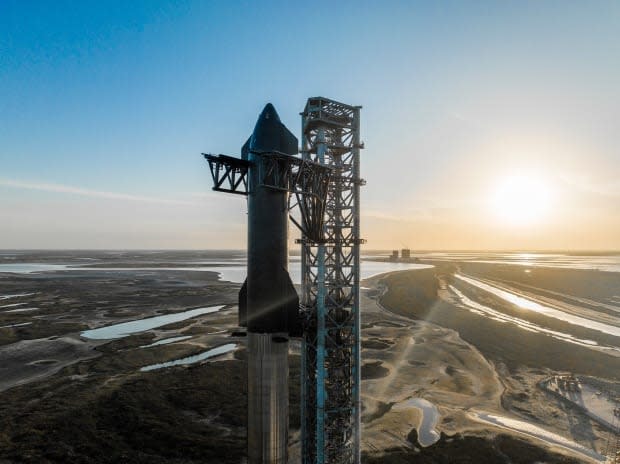
As is typical with SpaceX, there have been delays to this Starship orbital launch, but now it's estimated that it could happen in the first quarter of 2023. That will be good news for Japanese billionaire entrepreneur Yusaku Maezawa, who purchased all of the seats on a Starship rocket to orbit the moon in 2023. He recently announced his 10 passengers, who were selected in a contest.
The trip to the moon is supposed to happen in 2023, but it may once again be pushed depending on the success of Starship's first orbital launch. If it does happen, it will be the first civilian mission to the moon.
Planets, planets everywhere
The meeting up of planets in the sky — where they appear close together — are called conjunctions, and they're considered fun celestial events to observe. Here are just a couple you can catch early in the new year.
On Jan. 22, sharp-eyed Canadians can try to catch the pairing of Venus and Saturn low in the southwest just after sunset. The two will be so close, they'll almost look as though they're touching.
If you can, try using a pair of binoculars to get an up-close view.
Another planetary conjunction that will actually be similar to the Venus-Saturn one comes just more than a month later, this time between Venus and Jupiter.
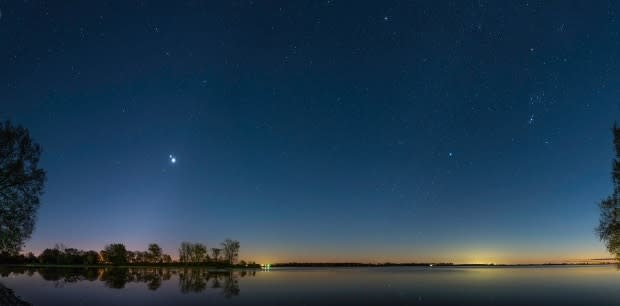
Like January's event, this one will take place after sunset, but this time it will be low in the west. Jupiter and Venus are two of the brightest planets in our night sky, so they will be hard to miss.
Once again, try to use a pair of binoculars if you can. You may be able to see four of Jupiter's brightest moons nearby.
More moon visits, plus an asteroid sample returns
After nearly 50 years with few visitors, the moon is the "it" destination.
At the end of 2022, NASA's Orion spacecraft spent several days of its 25.5-day mission in orbit around our nearest neighbour. And the moon visits continue into the new year.
Russia plans to launch Luna 25 to the moon sometime in 2023. Russia — as part of the former Soviet Union — has a long history of moon missions, particularly in the Luna program, with 20 successful missions. It was also the first to have a probe impact the moon, was the first to fly by the moon, and was the first to take an image of the moon's far side.
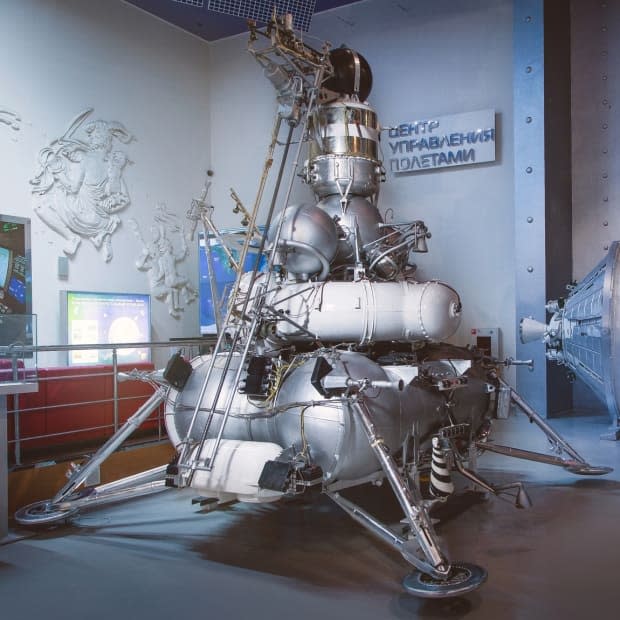
The Luna 24 mission, which took place in 1976, collected 170 grams of lunar samples from Mare Crisium and returned them to Earth.
Luna 25, however, will land in the south polar region of the moon and study the upper surface layer of the moon. It will also study the moon's exosphere, the incredibly thin atmosphere that holds gases, including potassium and sodium.
But what are the chances the Russians will launch?
"Russian space science funding (other than ISS, which brings in U.S. funds) is close to zero," said Jonathan McDowell, an astronomer at the Harvard-Smithsonian Center for Astrophysics who also specializes in rocket and satellite launches.
"So Luna 25 has been a long time in the making. Might go 2023, might go 2024."
India is also looking to return to the moon with its Chandrayaan-3, a lunar orbiter, lander and rover. While that mission has faced its own slew of delays (as with any major mission, such as Luna 25 and Artemis I), the Indian Space Research Organization said it's aiming for a June launch.
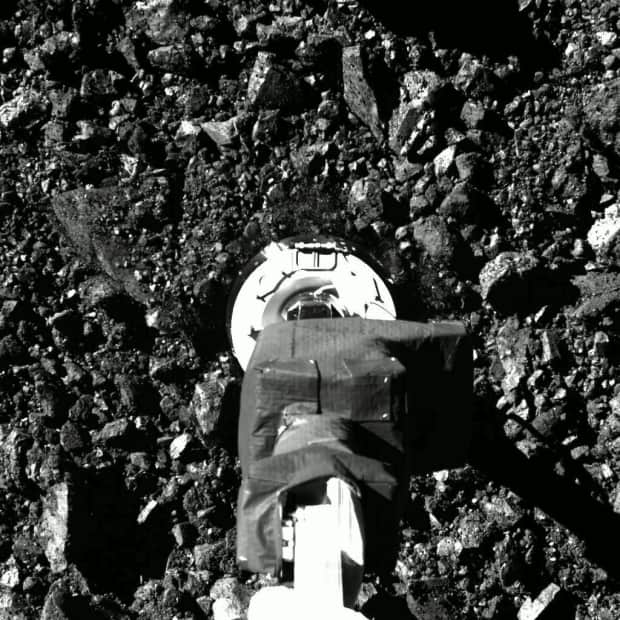
This is the country's second attempt at a robotic moon landing. Unfortunately, Chandrayaan-2's Vikram lander crashed on the surface, though its orbiter is still going strong.
Finally, OSIRIS-REx — the spacecraft that collected samples from an asteroid called Bennu — returns home with its cache on Sept. 24.
And the best part is because Canada provided an on-board instrument that allowed for 3D mapping of the asteroid, some of those samples will be analyzed right here at home.
Eclipses
Unfortunately, 2023 isn't a great year for eclipses in Canada.
The best — and the first — eclipse of the year for Canada is the annular solar eclipse on Oct. 14.
These eclipses happen when the moon passes in between the sun and the Earth, but its disk doesn't cover the sun entirely, leaving what some call a "ring of fire."
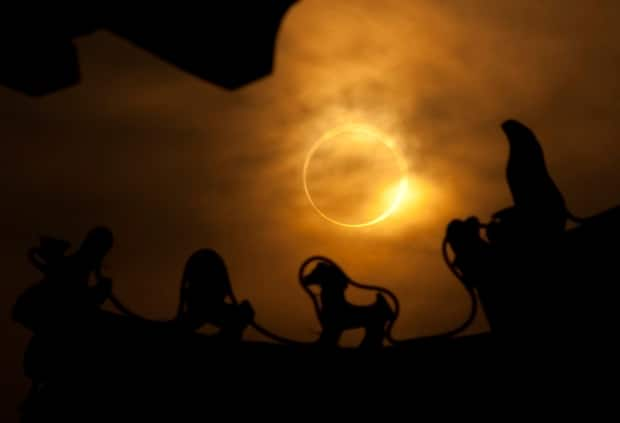
This year, Canada will get to experience only part of the annular eclipse. While the country won't see annularity, it will be seen as a partial eclipse. The further west you are, the more of the sun will be covered.
Two weeks later, it's the moon's turn, but it won't be nearly as dramatic.
Finally, on Oct. 28, there is a partial lunar eclipse that will be visible across Eastern Canada. The moon will slide through the fainter outer shadow of Earth for the most part, but eventually a thin slice will slide through the darker shadow. It will look as though part of the moon is missing. This will be seen primarily from parts of Ontario through to the Atlantic.


